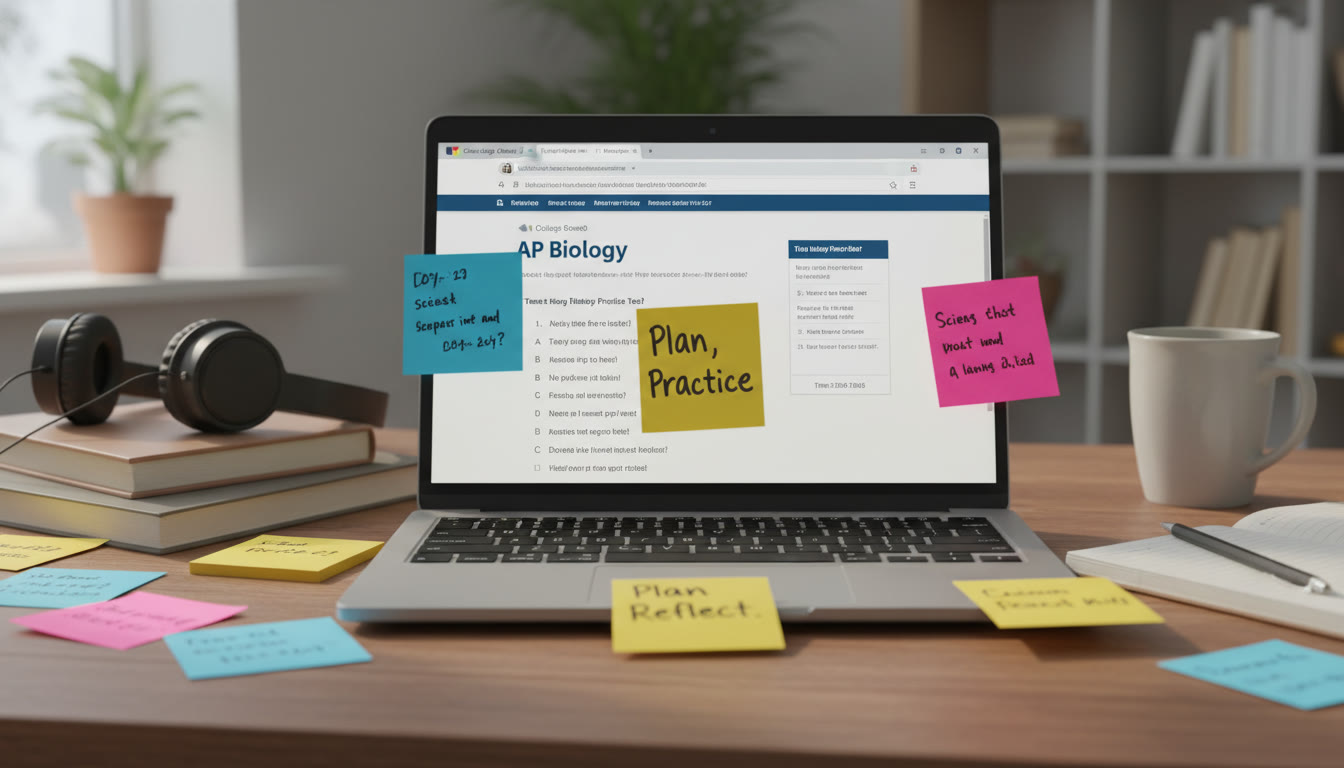Welcome: Why This Orientation Matters
Watching your child sign up for Advanced Placement courses is a proud moment — and frequently, a fuzzy one. Parents want to help, but it’s easy to swing from encouraging to controlling without meaning to. This guide is an orientation: a friendly, practical map that gives you tools to support your teen through AP courses and exams while preserving their autonomy, confidence, and love of learning.
What “Helping without Micromanaging” Really Means
Helping is showing up with structure, empathy, and resources. Micromanaging is doing so much for them that they never learn to manage themselves. The goal is to create a partnership where you provide scaffolding (time, strategy, emotional support) while your teen owns the day-to-day work and learns from successes and mistakes.

Start with Shared Goals, Not Commands
Begin by aligning on outcomes — not commands. Ask your teen what they want from their AP experience. Their answer might be college credit, a stronger transcript, intellectual curiosity, or a mix of these. When a parent and teen agree on the destination, the road map becomes a joint project rather than a battleground.
Questions to Ask in Your First Conversation
- Which AP courses are you taking, and why?
- What are your goals for each class: a specific score, personal growth, or both?
- How do you like to study? (Short sessions, late evenings, group study?)
- What support do you think would help you most right now?
Keep this conversation short and iterative. Revisit goals once per month rather than revising the plan every week.
Build a Supportive Structure: Tools That Don’t Smother
Structure matters. Teen brains thrive with predictable routines and clear expectations. But structure can be lightweight — think of it as a safety net rather than a cage.
Weekly Study Rhythms
Instead of scheduling every minute, help your child design a weekly rhythm: blocks for homework, blocks for review, and blocks for rest. Encourage them to plan, then check in briefly on Sundays to see if the rhythm worked.
- Study Blocks: 45–60 minutes focused with 10–15 minute breaks.
- Review Sessions: Two 30-minute weekly reviews per subject to move knowledge into long-term memory.
- Catch-Up Time: One buffer block per week to handle surprises.
Tools That Empower (Not Replace)
Introduce tools that enhance independence: a shared digital calendar, a simple habit tracker, and a note-taking system. Offer to set up a calendar together, then let your teen take ownership of it.
Practical Study Strategies That Build Confidence
AP success is less about endless hours and more about strategic practice. These methods are the difference between passive exposure and active learning.
Active Study Techniques
- Spaced Retrieval: Short, frequent recall sessions spread over weeks beats one marathon session.
- Practice Exams: Simulate test conditions. Help source practice exams and set aside time to review mistakes together.
- Explain-It-To-Me Sessions: Ask your teen to teach you a concept — teaching is a powerful test of mastery.
- Chunking: Break large tasks (e.g., AP Research projects) into 30–60 minute chunks with clear mini-deadlines.
Encourage your teen to try one new technique per month and reflect on what worked.
A Sample Weekly Plan (Flexible)
| Day | Main Focus | Time | Notes |
|---|---|---|---|
| Monday | Classwork + 30-min Review | 5:00–7:00 PM | Light exercise after studying |
| Tuesday | Practice Problems | 6:00–8:00 PM | Focus on weak topic |
| Wednesday | Group Study or Tutoring | 5:30–7:00 PM | Social + learning |
| Thursday | Long-Form Writing or Project Work | 6:00–8:00 PM | Break into sections |
| Friday | Light Review + Rest | After homework | Recharge |
| Weekend | Practice Test or Deep Work | 1–3 hour block | Simulate exam conditions |
Communication: Short, Clear, Supportive
Words matter. Swap “Did you finish?” for “How can I help you meet your plan this week?” The latter invites collaboration rather than defensiveness.
Checklist for Supportive Conversations
- Lead with curiosity, not judgment.
- Ask about strategy more than results.
- Validate effort (“I can see you put real time into this”).
- Offer solutions only after listening.
Short, consistent check-ins (10–15 minutes) are more effective than long interrogations. Keep one weekly meeting to revisit the study rhythm and goals.
When to Step In — and When to Step Back
There are moments that call for parental intervention: emotional distress, persistent failing grades, or when your child asks for help balancing responsibilities. Other times, stepping back will teach resilience.
Signals That Warrant Action
- Burnout symptoms: constant exhaustion, loss of interest, or declining sleep.
- Academic red flags: several failing grades or missed deadlines across multiple classes.
- Behavioral changes: sudden withdrawal, anxiety spikes, or repeated avoidance.
If these signs appear, prioritize supportive problem-solving: connect with teachers, consider targeted tutoring, or simplify the schedule. A short-term increase in parental involvement to stabilize the situation is wise — but create an exit plan so independence is restored.
How Tutoring Fits — Use It Strategically
Tutoring is not a replacement for your teen’s effort; it’s leverage. The right tutor provides targeted skills, accountability, and moral support. Personalized tutoring — for example, Sparkl’s 1-on-1 guidance with tailored study plans and expert tutors supported by AI-driven insights — can identify concept gaps, create efficient practice routines, and provide just-in-time feedback.
How to Choose When and How to Use a Tutor
- Use tutors for persistent conceptual gaps or to prepare for full practice exams.
- Aim for short, focused sessions (4–8 weeks) with specific goals rather than indefinite weekly meetings.
- Let the teen select the tutor when possible — ownership increases engagement.
Grading Progress: More Than Test Scores
AP scores matter, but they’re not the whole story. Track both performance (practice exam scores, rubric-based writing) and process (consistency, study method adoption, time management). Celebrate small wins like mastering a topic or organizing notes — those habits compound.
Simple Progress Dashboard
| Metric | Why It Matters | How to Track |
|---|---|---|
| Practice Exam Score | Predicts exam readiness | Monthly timed practice |
| Homework Completion | Shows consistency | Weekly checklist |
| Stress Level | Signals burnout risk | Weekly check-in scale (1–10) |
| Study Techniques Used | Indicates skillful learning | Journal or quick post-study notes |
Emotional Support: The Often-Overlooked Differentiator
Emotions drive performance. Teens who feel heard and competent perform better under pressure. Your role is to normalize setbacks, call out progress, and model calm during exam season.
Quick Emotional Support Tactics
- Normalize failure: share a time you didn’t do well and what you learned.
- Practice small rituals: a pre-exam breakfast, a short walk, or a calming playlist.
- Encourage purposeful breaks to prevent cognitive fatigue.
Real-World Examples and Scenarios
Here are three short case vignettes to show how this orientation plays out in real life.
Case 1: The Overzealous Planner
Sam’s mom built a minute-by-minute schedule for AP Physics. Sam felt micromanaged and started rebelling, skipping sessions. After a weekend conversation about goals and preferred study style, they converted the schedule into a weekly rhythm and agreed on two weekly progress check-ins. Sam’s engagement and scores recovered.
Case 2: The Quiet Struggler
Janelle avoided asking for help in AP Calculus despite low test scores. Her parent offered a low-pressure tutoring trial and framed it as “extra practice” rather than remediation. With a tutor focusing on conceptual gaps and a study plan from Sparkl that included targeted practice and AI-driven insights, Janelle regained confidence and improved steadily.
Case 3: The High Achiever Facing Burnout
Diego was taking four APs and showed signs of exhaustion. His parents intervened by reducing his course load the next semester, introducing weekly downtime, and replacing one evening study block with an enjoyable hobby. The change preserved his mental health and long-term motivation.
Common Pitfalls and How to Avoid Them
- Micromanaging Homework: Instead, coach planning and celebrate completion.
- Letting Emotions Drive Policy: Don’t punish a low score — diagnose and adjust strategy.
- Assuming More Time = Better Results: Encourage deliberate, active practice over hours logged.
- Not Using Experts Strategically: Tutoring works when it’s diagnostic, targeted, and time-bound.

End-of-Year and Exam-Season Checklist
As exam season approaches, use this checklist to balance readiness and well-being.
- Schedule at least two full-length, timed practice exams per AP subject.
- Review exam rubrics and scoring guidelines; practice free-response questions under timed conditions.
- Confirm logistics early: test dates, materials, and any school protocols.
- Maintain sleep, hydration, and short daily exercise to keep cognitive performance high.
- If needed, arrange short-term targeted tutoring to shore up weak areas.
Parting Thoughts: Parenting for Lifelong Learning
Your job during AP season is to be a steady presence: an organizer of resources, a calibrator of expectations, and an emotional anchor. When you prioritize process over point-in-time results — encouraging reflection, ownership, and smart support — you teach a skill far more valuable than any score: how to learn well. That skill will serve your teen through college and beyond.
If you’re considering additional support, personalized tutoring — such as Sparkl’s 1-on-1 guidance with tailored study plans and expert tutors augmented by AI-driven insights — can be a pragmatic tool when used thoughtfully and temporarily. The right support can accelerate understanding while preserving your teen’s independence.
Final Quick Checklist for Parents
- Start with a short goals conversation; revisit monthly.
- Help build a weekly rhythm but let your teen manage it.
- Promote active study techniques: spaced retrieval, practice tests, and teaching back.
- Use tutoring strategically and time‑bound when required.
- Prioritize emotional well-being and model calm.
Be patient with the process. The balance between helping and hovering takes practice — and a few honest conversations. Stay curious, keep the tone collaborative, and your teen will not only be prepared for AP exams but will also gain habits that last a lifetime.
Need a Next Step?
Pick one small action this week: a 15-minute goals conversation, setting up a shared calendar, or scheduling a practice exam. Small, consistent steps create big changes. You’ve got this — and so does your teen.















No Comments
Leave a comment Cancel